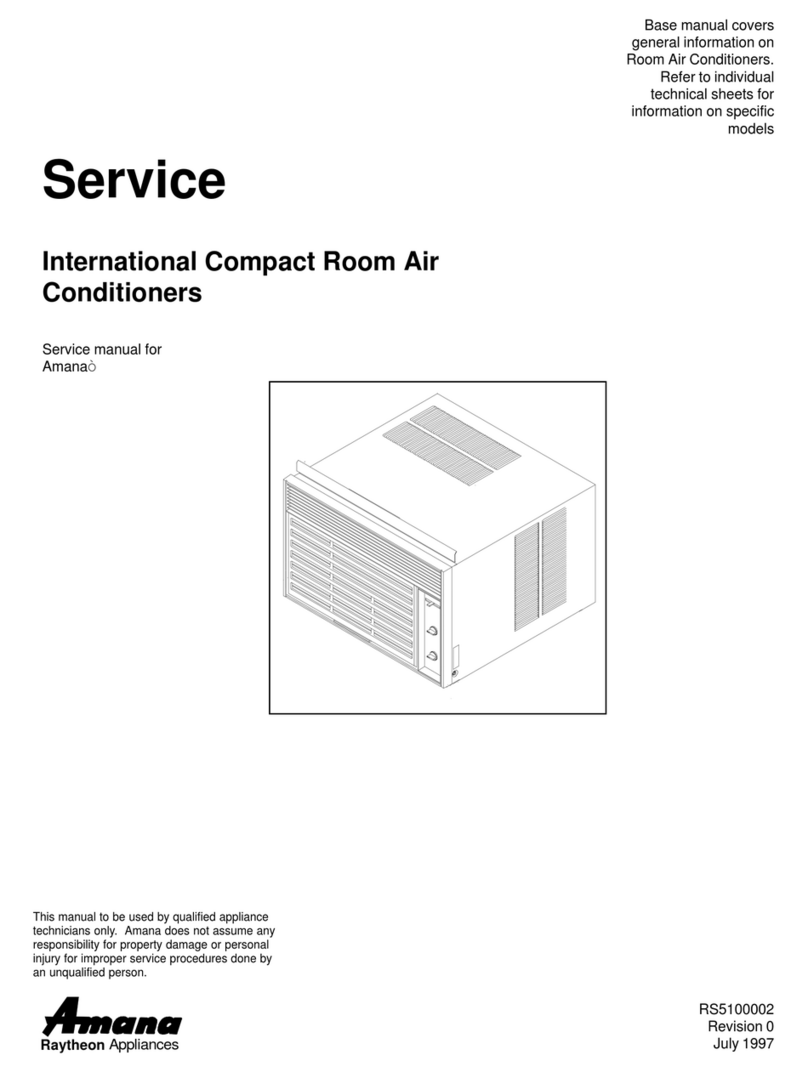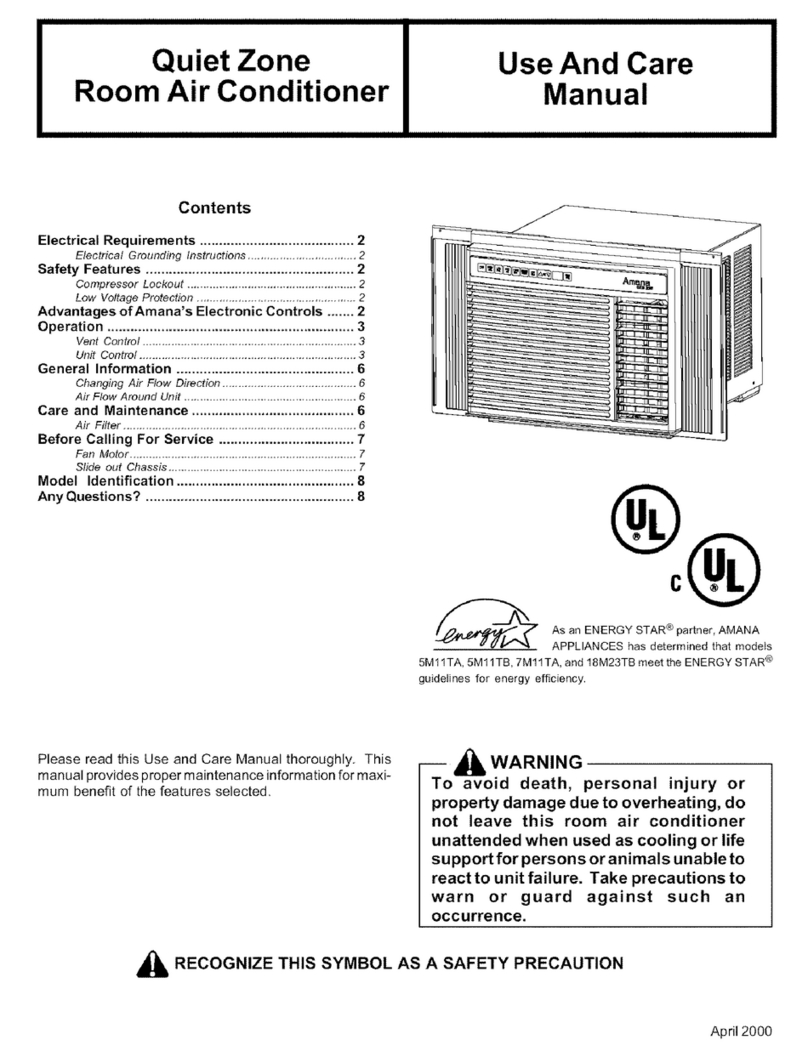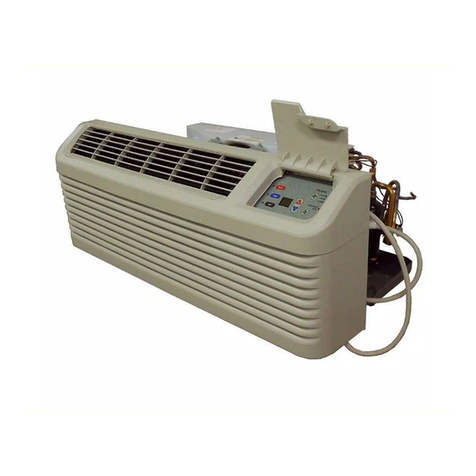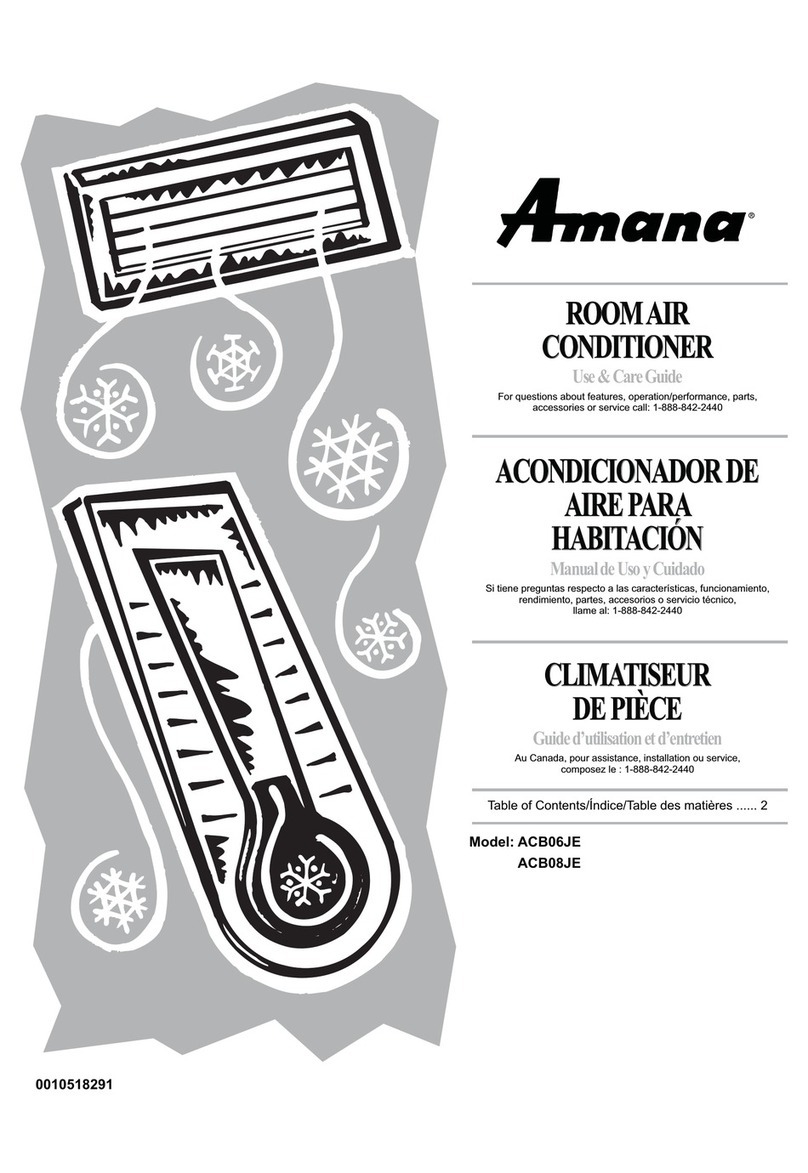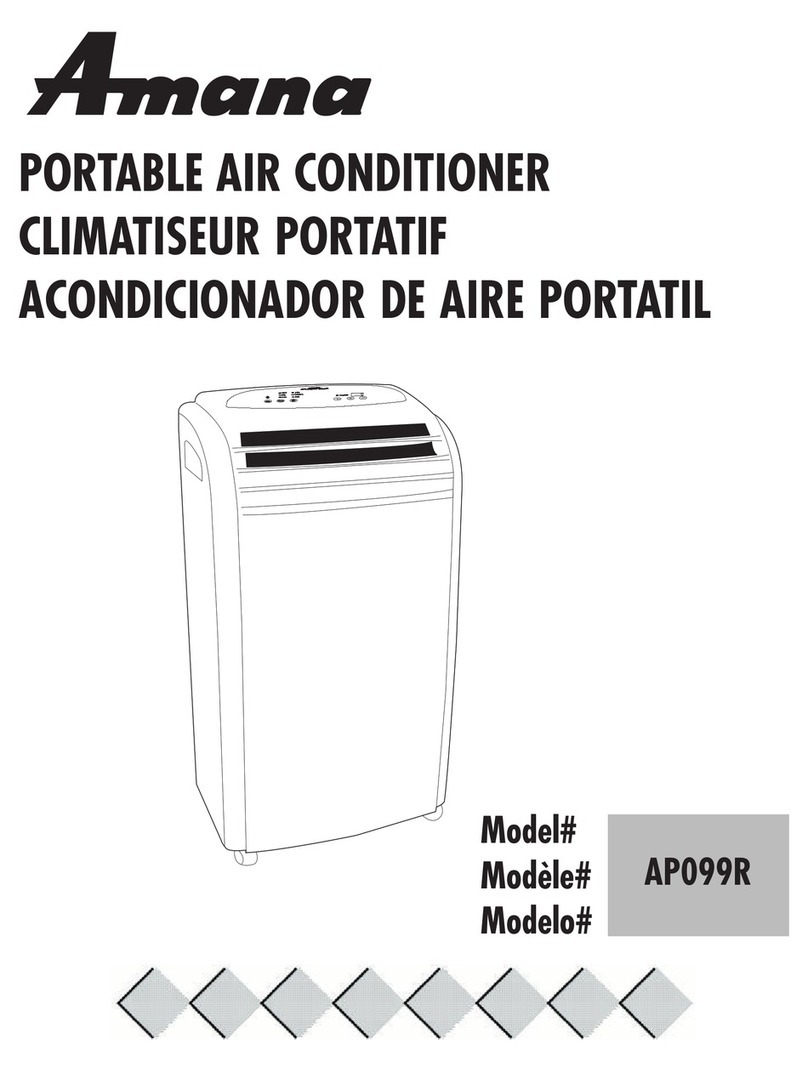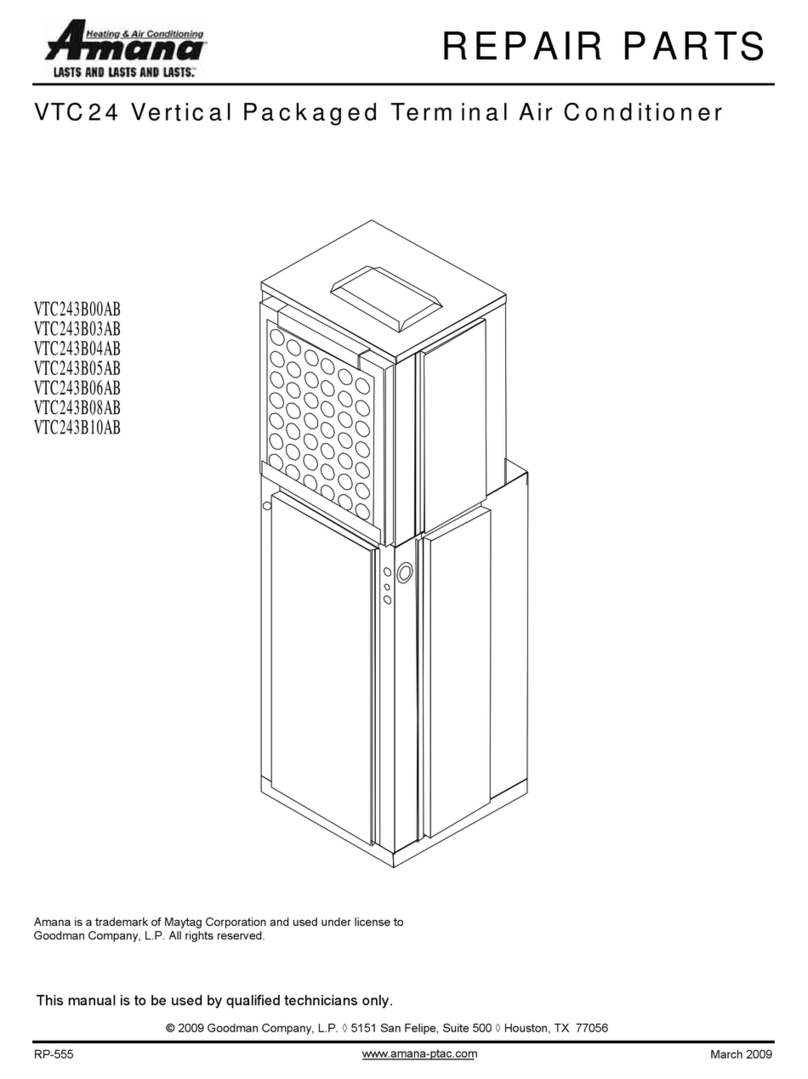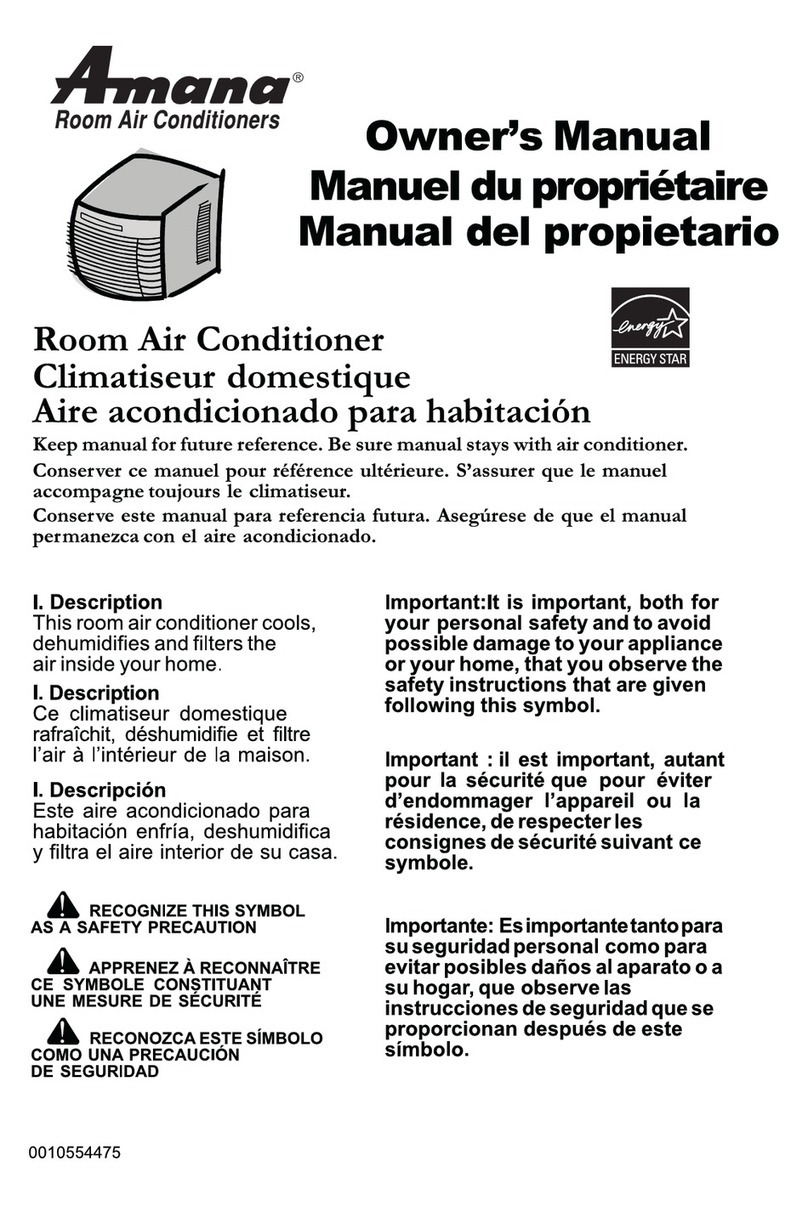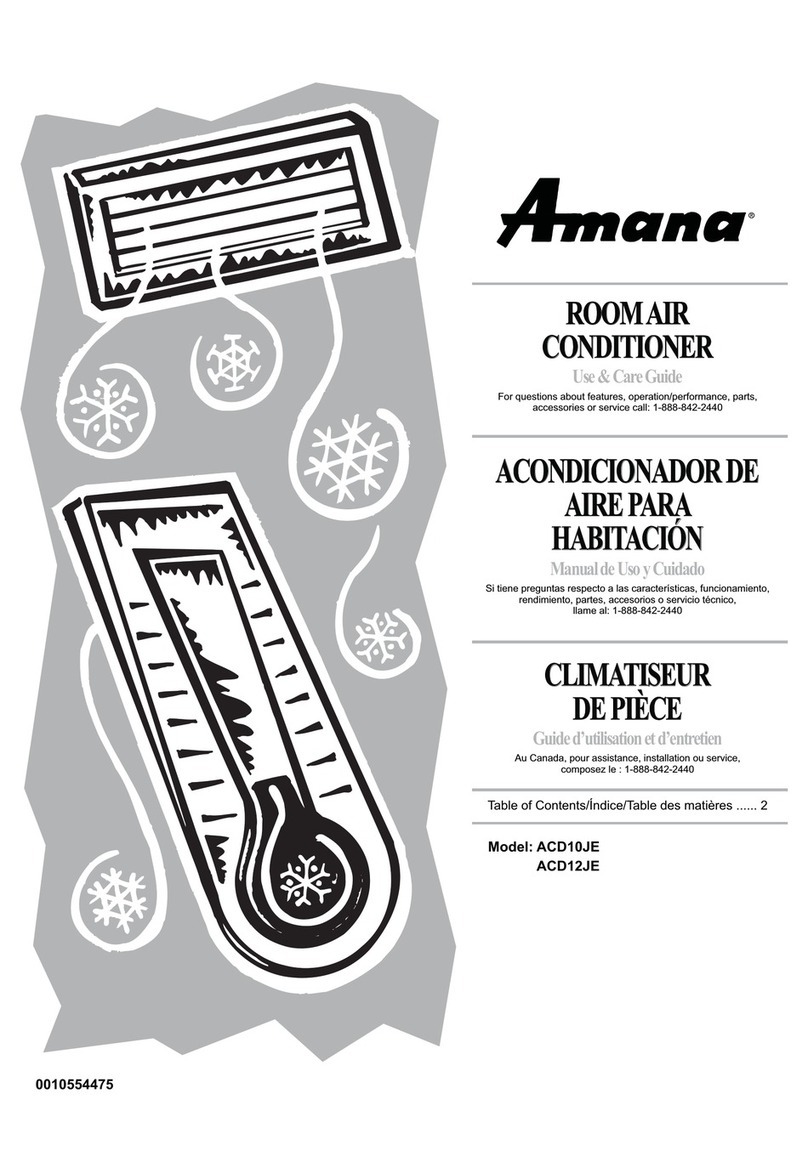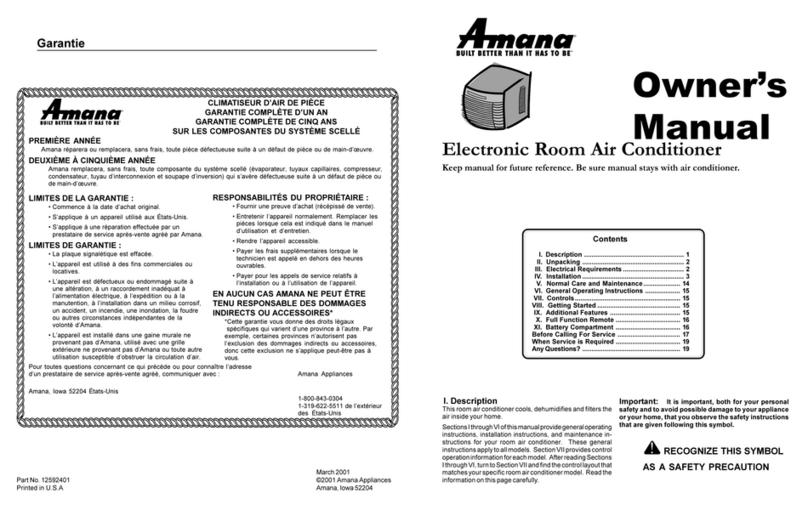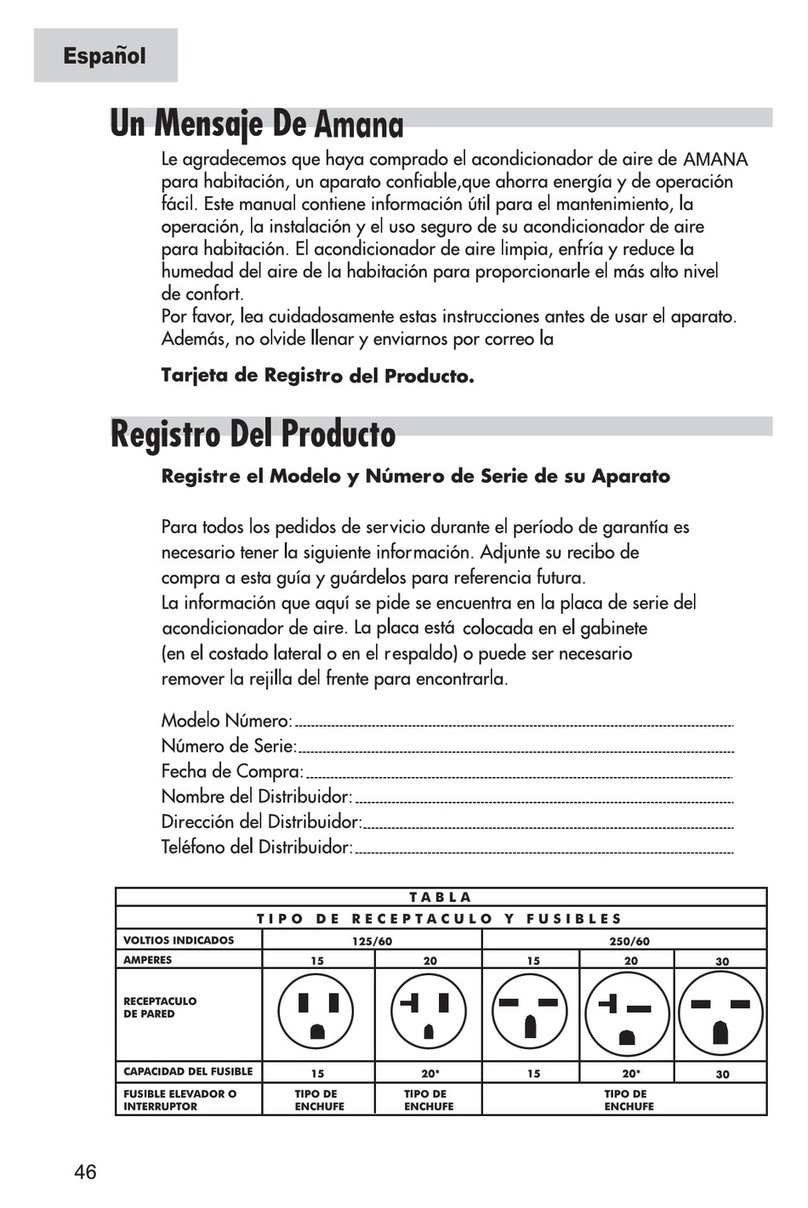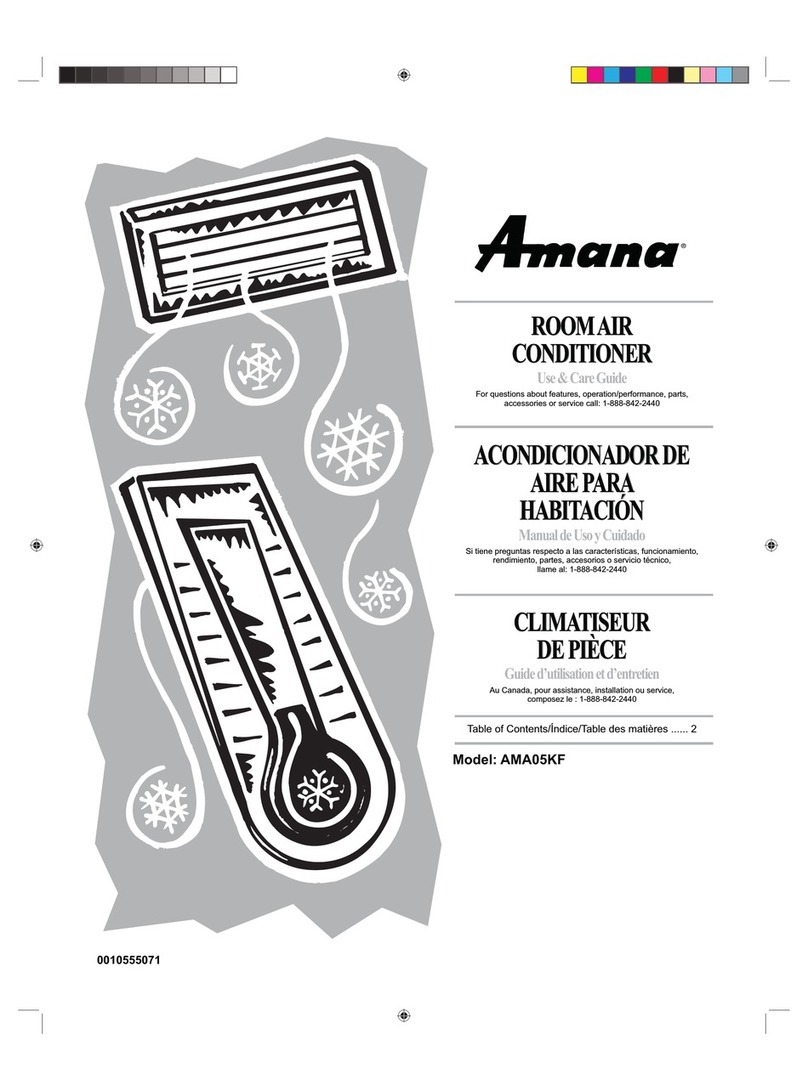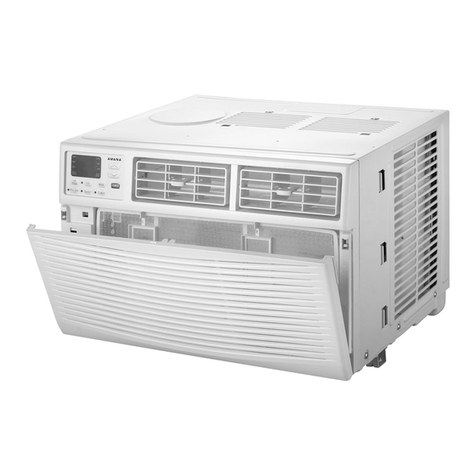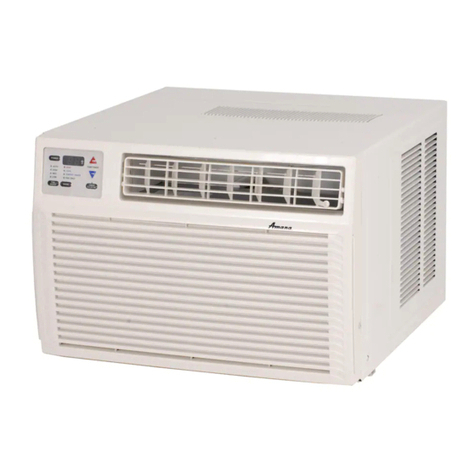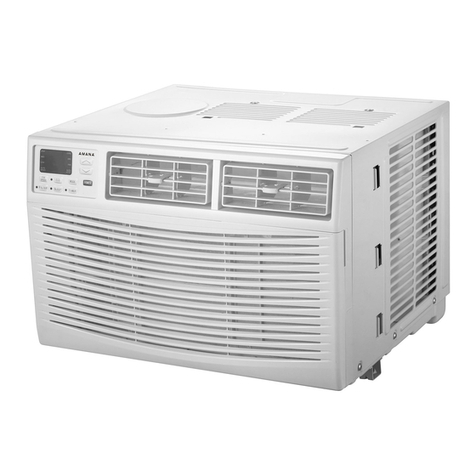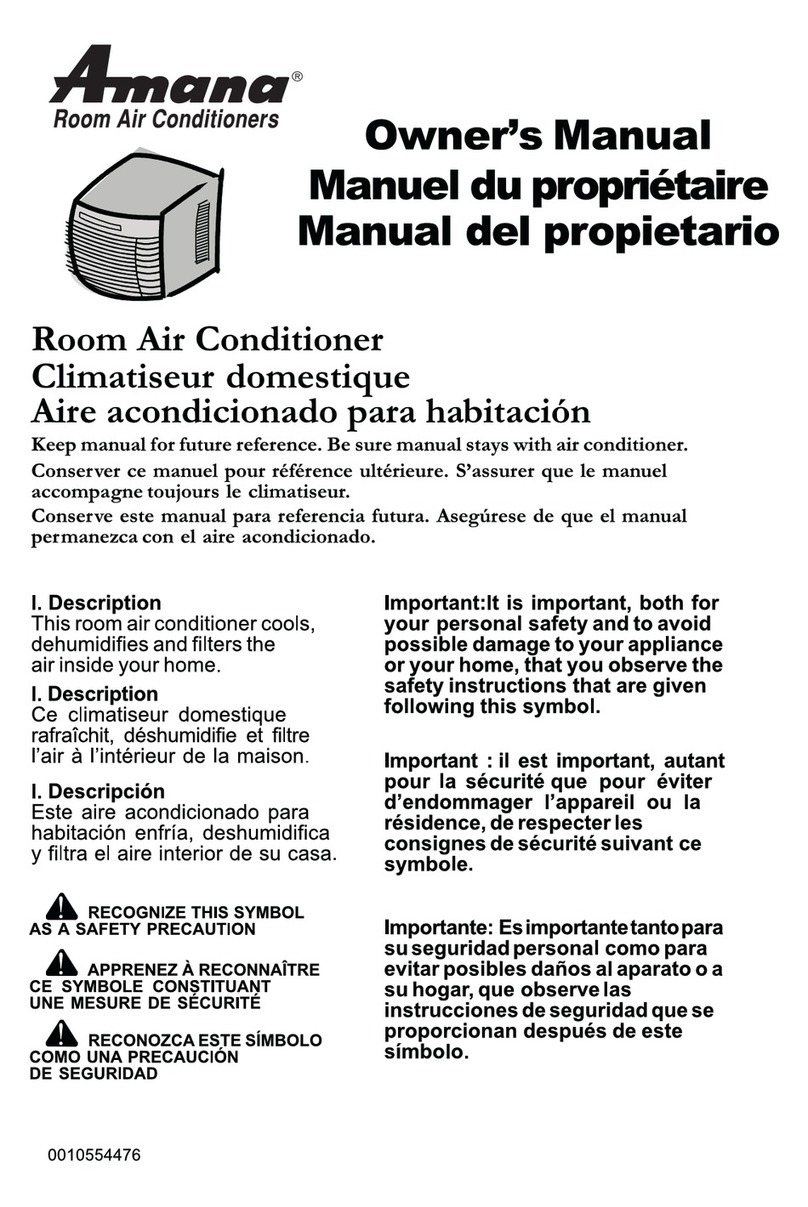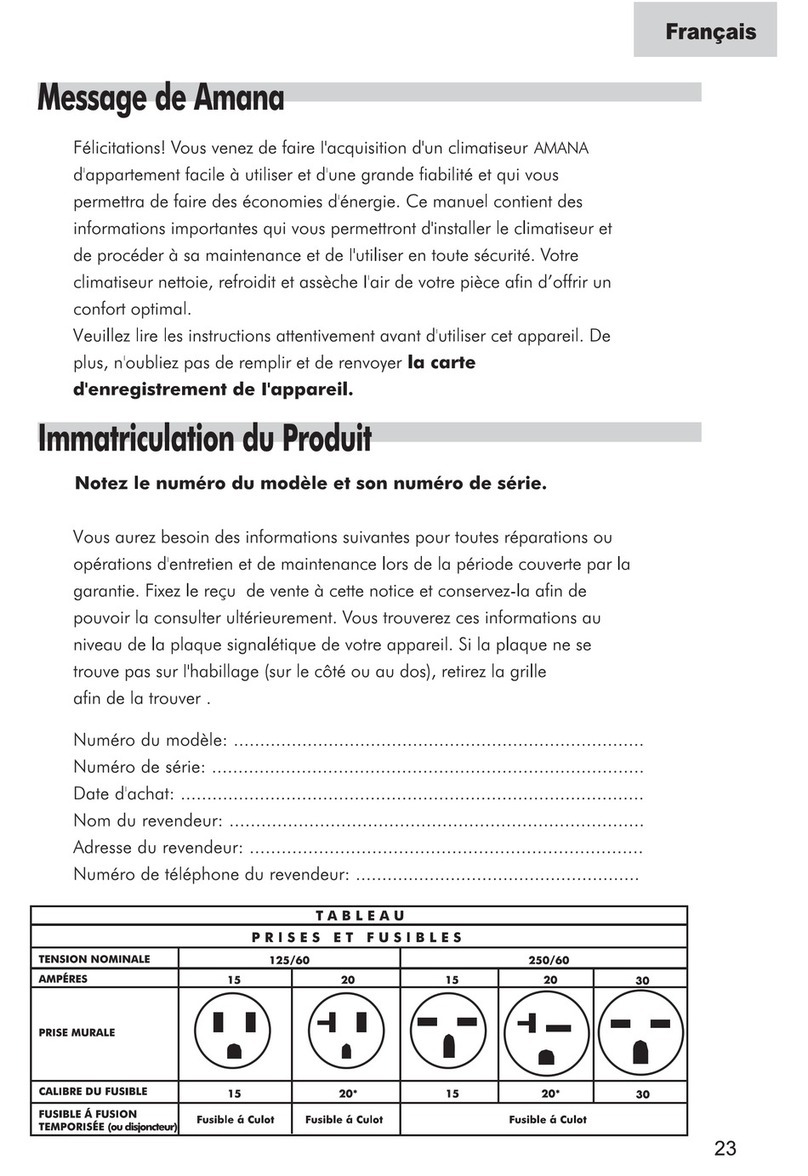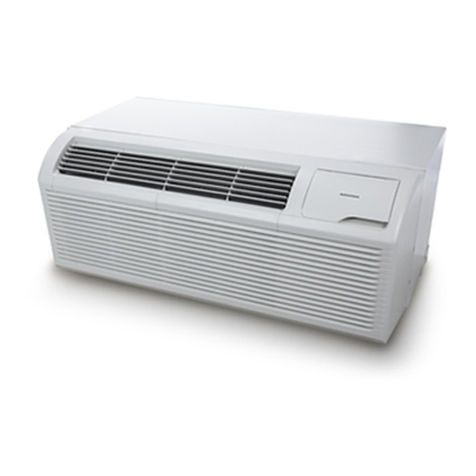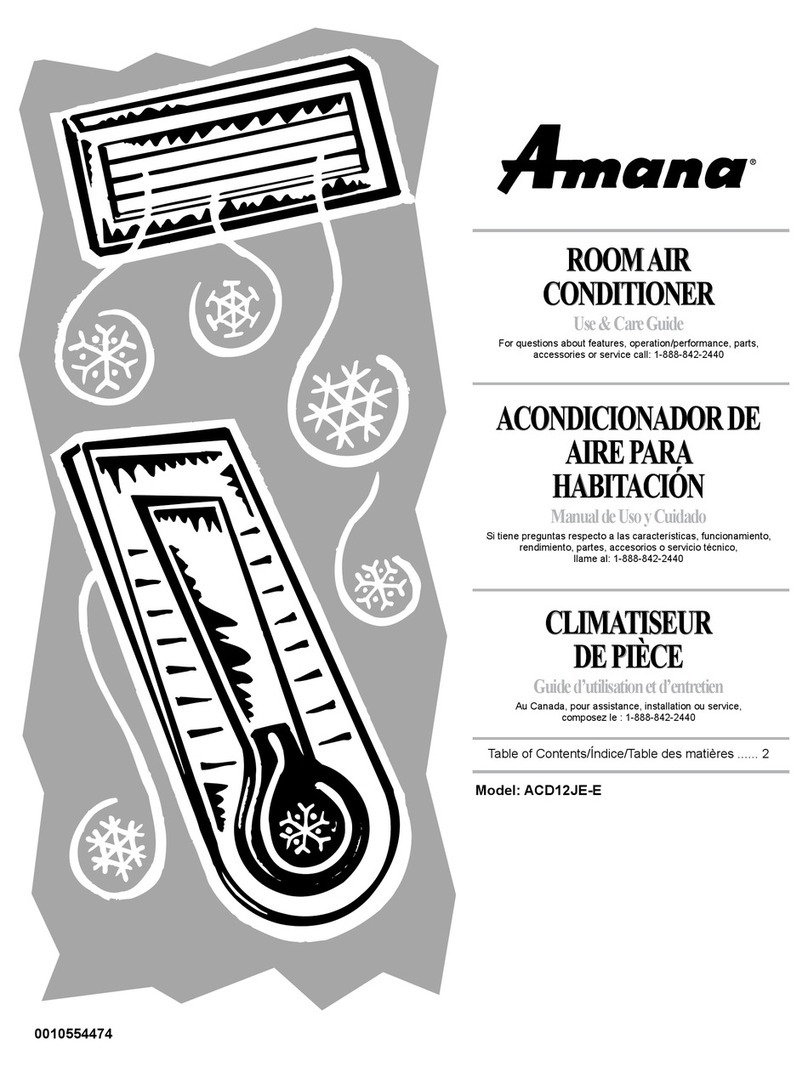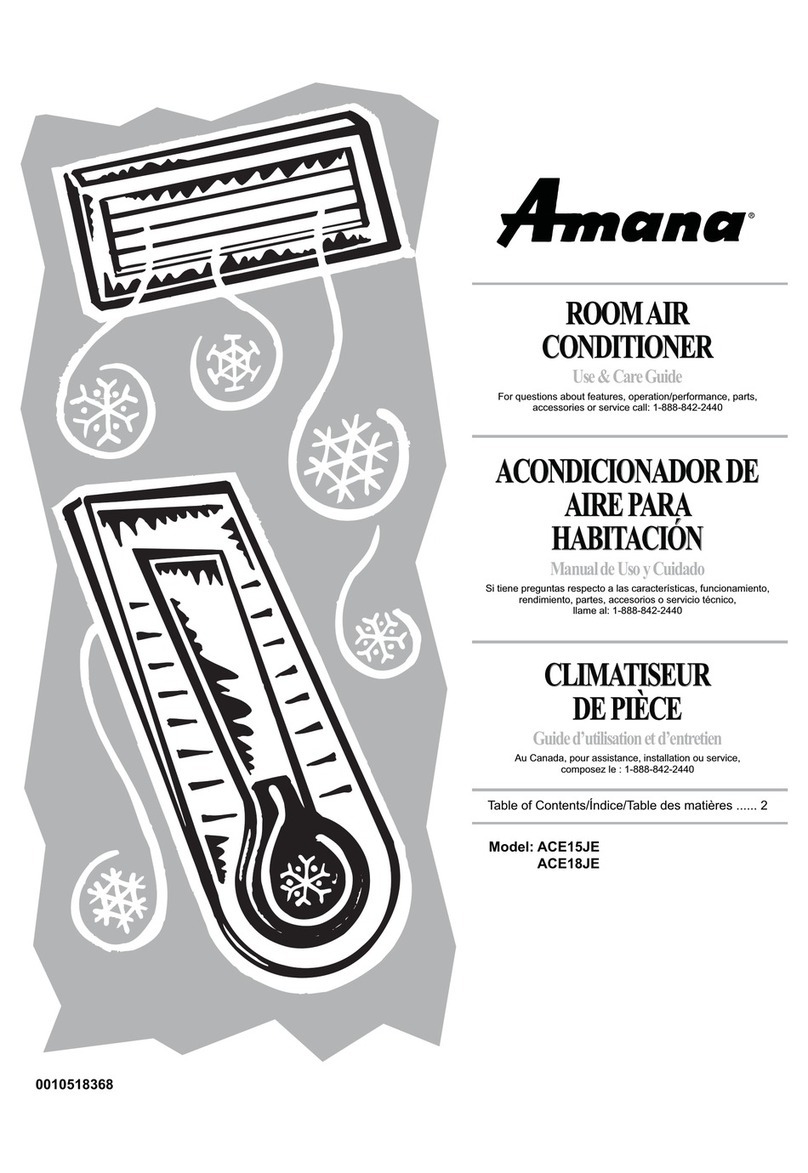
4
•Energy Management System Features
Temperature Setback - This option can save energy dol-
lars for unrented or unoccupied rooms by automatically
setting back the operational temperatures. This mode of
operation is selected through the configuration routine
(see Configuration Settings section). NOTE: Temperature
setback does not work with a wired remote thermostat.
Door Switch and Motion Sensor Low VoltageTerminals (DS1,
DS2, MS1, MS2) - The door switch and motion sensor oper-
ate as a unit, the door switch terminals allows for wired
connection of a door sensor to the control board. The
motion sensor interprets any door movement as a signal
of occupancy. If the switch between DS1 and DS2 is closed,
the door control will interpret the room door as closed. If
the switch between MS1 and MS2 terminals is opened (or
closed if unit is configured for normally open) the control
will interpret the action as a signal of occupancy. If thirty
minutes pass without any door activity, Energy Manage-
ment Temperature setback activates.
Serial Port Interfaces - Two serial ports located on the
control board provide easy access for two-way communi-
cations to the control board from an optional RF antennae
can be attached for wireless communications.
TRANSPORTATION DAMAGE
All units are securely packed in shipping containers tested
according to International Safe Transit Association specifica-
tions. The carton must be checked upon arrival for external
damage. If damage is found, a written request for inspection
by the carrier’s agent must be made immediately.
In the event of damage, the consignee must:
1. Make notation on delivery receipt of any visible damage to
shipment or container.
2. Notify carrier promptly and request an inspection.
3. In case of concealed damage, carrier should be notified as
soon as possible—preferably within 5 days.
4. File the claim with the following supporting documents
within the 6 month statute of limitations.
a. Original Bill of Lading, certified copy, or indemnity
bond.
b. Original paid freight bill or indemnity in lieu thereof.
c. Original invoice or certified copy thereof, showing
trade and other discounts or reductions.
d. Copy of the inspection report issued by carrier’s
representative at the time damage is reported to the
carrier.
The carrier is responsible for making prompt inspection of
damage and for a thorough investigation of each claim. The
distributor or manufacturer will not accept claims from dealers
for transportation damage.
UNIT ACCESSORIES
This unit is designed for through-the-wall installation in new or
existing buildings. To complete the installation of this PTAC, an
insulated wall sleeve and an outdoor grille (either the stamped
aluminum grille, the architectural grille or polymer grille) are
required.
The chassis and the cabinet front are shipped in one carton.
Optional accessories to complete a particular installation are
the following:
OPTIONAL ACCESSORIES
Power Switch Kit Wire Harness Kit
Wall Sleeve Kit Circuit Breaker Kit
Key Lock Kit Architectural Grille Kit
Drain Kit Remote Escutcheon Kit
Filter Kit External Transformer Kit
Subbase Kit Water or Steam Valve Kit
Hard Wire Kit Condensate Disposal Pump Kit
Main Duct Kit Remote Temperature Sensor Kit
Power Vent Kit Wireless RF Antenna
Leveling Legs Kit Wireless RF Thermostat
Hydronic Heat Kit Wireless Motion Sensor
Stamped Grille Kit Wireless Door Switch
Curtain Guard Kit Wired Motion Sensor
Polymer Grille Kit Wired Door Switch
Extension Duct Kit Extra Deep Sleeves
Wall Thermostat Kit
Fuse Holder Kit
NOTE: Consult sales literature for the appropriate voltage and
amperage selections, if applicable. For additional details and
illustrations of the accessories, refer to the Architect’s and
Engineer’s Manual.
